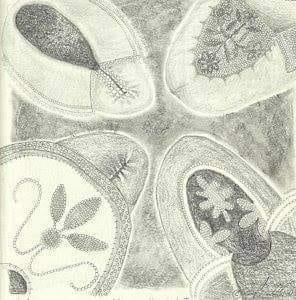Trail of Tears, October 31, 1838

Potawatomi Trail of Death - Diary of William Polke, Oct. 31, 1838: "Left Encampment this morning at half after 7 o'clock—the company under Capt. Hull being attached to the emigration—and at 12 o'clock passed through Independence. At 1 o'clock we reached our present encampment two miles south of Independence, and ten miles from the camp of yesterday. After reaching camp in the evening a small quantity of shoes were distributed among the emigrants." Drawing of Quehme, artist unknown. (I love this drawing).
























